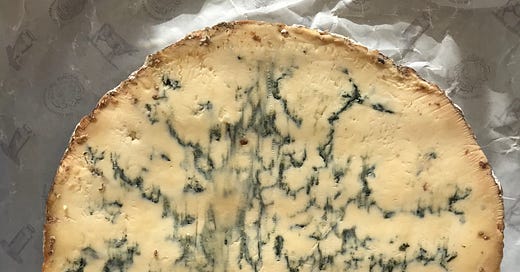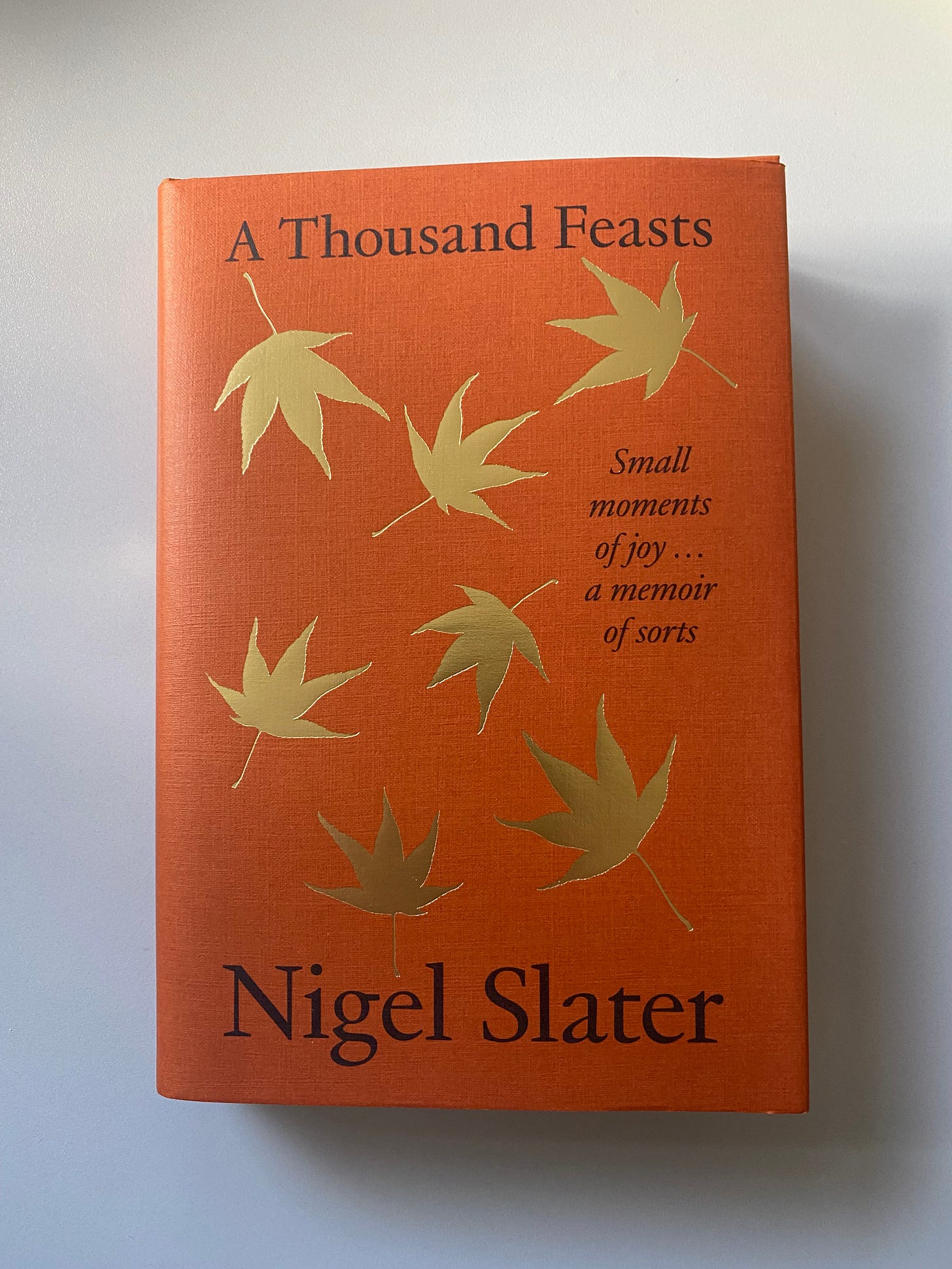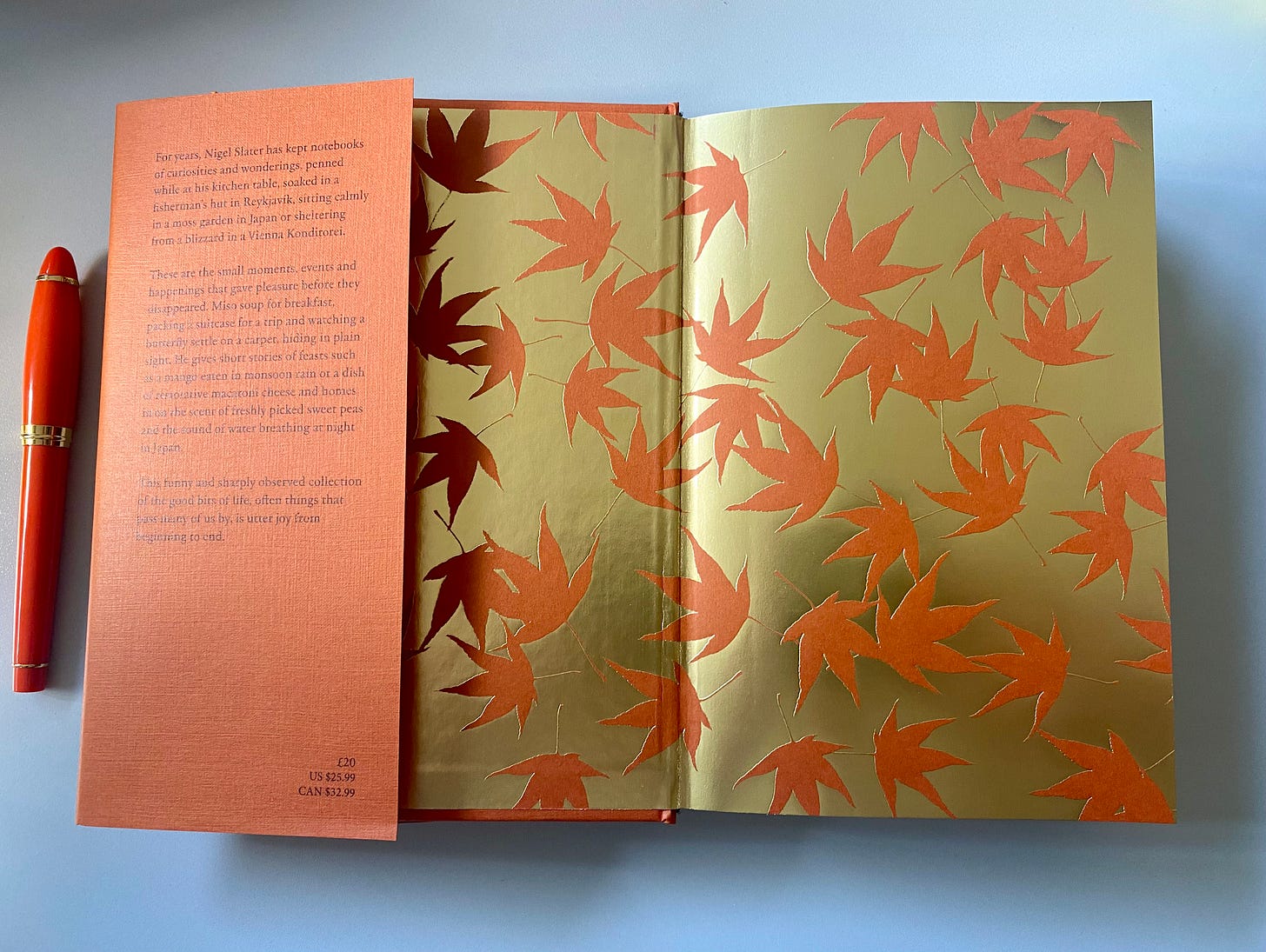Is it ever okay to eat flavoured cheese?
Hmmmm… Have you heard of drunken cheese? And did you know cheese has seasons and the good stuff nearly died out in the UK 100 years ago? Is whisky ever a good match for cheese? Bring on the debate!
Before I dive into cheese…
Four KB Joyous Things for your delectation:
LISTEN Dan Saladino’s Food Programme, A Food Revolution in 10 Ideas, is an episode full of possibility and hope, with contributions and wisdom from engaging experts whose mission it is to make a difference to the future of the planet. As inspirational as it is important. Find the programme here.
WATCH Nothing to do with food (although there is some mother-son cooking along the way), this episode of In My Own Words, featuring the much loved Nigerian-Scottish poet Jackie Kay, who was adopted as a baby, is one to savour. You’ll find yourself wanting to meet Jackie, to get to know her, to be her friend, to listen to her recite poetry and to sit down and share a pot of tea with her. My mind keeps meandering back to this moving, thought-provoking joy .
VISIT Have you ever been to London’s Garden Museum, just south of the River Thames, near Lambeth Palace? Little known fact: it has a medieval tower you can climb (the reward: wonderful views of the river). And this weekend it’s the museum’s first ever Harvest Festival, in partnership with The Drop LDN (have a look at their website to discover all manner of good things). There are talks, stalls, workshops and a ‘fruity walk’ around Lambeth… Intriguing! Entry £5; tickets for talks are on a pay-what-you-can basis. There’s a gorgeous café, too. Favourite haunt when I’m in the area.
READ And, my goodness, Nigel Slater’s new book. Take a moment to appreciate not only the cover but the gold ‘endpapers’ as they’re called…
Love how it matches the Aurora fountain pen friends gave me as a leaving present when I departed my job at delicious. back in February (they know me well; treasured possession; in constant use). And of course the book is a joy to read: Nigel’s beautifully crafted notes and quiet observations are the definition of a choice book to read by the fire, warming dram in hand.
A Thousand Feasts (HarperCollins, £20) is out now and you can buy a signed copy here. A good present for someone special, if ever I saw one.
Now back to cheese…
It’s no secret I’m a turofile – that is, a lover of cheese… The good stuff, anyway. The obsession (for it is an obsession) cranked up a notch when I was first invited to judge the World Cheese Awards by founder Bob Farrand about 16 years ago. The awards were held in Gran Canaria and, due to flights being cancelled, plane changes and general journey chaos, many of the judges ended up having only 36 hours there – in fact, some were accidentally (temporarily, I hasten to add) left behind. Some didn’t ever get their luggage… And I seem to remember a story about one delivery of cheese melting on the runway in the scorching Canarian sun because of a customs mix-up. The stuff of nightmares for the organisers… Just imagine coordinating thousands of cheeses arriving from all over the world, only for that to happen to a few of them.
That was a judging experience I’ll never forget, and over the years I’ve learned so much about the intricacies of cheese-making and maturing (the art of the affineur is as vital as that of the maker). I’ve judged in places as varied as San Sebastian, Bergen, Cardiff and the NEC in Birmingham. The reason I love it? It’s a gathering of experts, writers, sellers and makers from all over the world, and you get to meet so many people passionate about their craft. There are no competitive selfie poses for Instagram: everyone’s too busy talking cheese and tasting cheese.
My happiest memories were in San Sebastian – one of those experiences where the people, team, cheese-tasting and epic city came together in one unforgettable package. Here’s a picture taken during an afternoon touring the pintxos bars – after judging, I hasten to add…

It could have been so different…
Did you know proper cheese – by which I mean farmhouse cheese, made in small batches by artisans – nearly died out in the UK after World War II? Before the First World War there were around 3,500 artisan makers, but farmers stopped making cheese when war broke out. Then, at the height of economic uncertainty, amid worries of another war looming, a decision was made with far-reaching consequences: in 1933, the Government created the Milk Marketing Board to control and protect the production of milk in the UK, ensuring there would be enough milk to feed the nation during a time when Europe was in turmoil.
What did that mean for farmers? They were guaranteed a fair price for their milk, which sounds good in theory, but the effects on Britain’s cheese heritage were disastrous. Farmers were getting a good price just for their milk – so why put in the time and care required to make cheese? Generations-old skills were abandoned… in most cases for good. By the end of World War II, the number of farmhouse makers had dwindled to less than a hundred (read more about it here).
Surely we still ate cheese?
Yes, but instead of it being made on farms, cheese started to be mass produced in factories, in huge batches, and those mass-produced, characterless blocks were nothing like their wonderful, complex predecessors. Anyone wanting the good stuff started buying cheese imported from abroad.
Hope!
In the 1980s a skills revival was spearheaded by the few cheesemongers and makers still in existence, spurred on by a fresh interest in food, cooking and eating out, after years of austerity. The UK started, slowly, to shake off its cheese ignominy and a new breed of makers began to emerge. And, yes, The Milk Marketing Board came to an end in the 1990s.
It’s complex story, though. It’s never been harder to make a living as a dairy farmer, especially with milk in big stores being sold at unrealistically low prices. Farmers have been compelled to diversify, and cheese-making is one way to do that.
The industry took another major hit during Covid, when restaurants suddenly shut and supply chains broke down. You probably remember images of precious milk being poured down the drain. The crisis was only averted through quick-thinking campaigns, especially that by food writer Jenny Linford, who encouraged us, en masse, to buy cheese online in a bid to save innumerable small businesses (you can read about it here).
Let’s shout about it
Today Britain produces some of the world’s finest cheeses, and there’s a raft of new indie cheesemongers celebrating and championing the bounty. I’m always keen to meet and learn more from experts in the cheese world – people who champion artisan cheese in its many guises, from goat’s to blue to hard cheeses and pungent washed rind (that’s where the bloomy mould that develops on the outside of a cheese is washed in brine or alcohol, perhaps perry, brandy or wine). Three cheers for the fact that there are now too many great British cheeses to list in one newsletter.
If you’re keen to explore and get acquainted with new favourites, that’s where experts like Svetlana Kukharchuk, aka The Cheese Lady (great name), come in – find her on Instagram here. I asked about her journey from growing up in Siberia to living in Scotland and running one of the UK’s best cheese shops, plus invaluable advice on putting together a cheeseboard beyond the ordinary…
Running a cheese shop is a dream job, surely? How did you get to make it your career? I’m from Siberia and we didn’t have a lot but we were able to grow our own food. A big part of life was family and community: gathering to celebrate, share and eat the food we’d grown. It’s a remote region and the climate is one of extremes: it can be plus 30°C in the summer, minus 30°C in the winter. I left a long time ago to go abroad and study international relations in America, naively thinking I could change the world, but I soon became disillusioned.
I moved to New York, where life took an unexpected turn: I got a job at Murray’s – the best cheese retailer in the city, which now has branches right across the US. They sold more than 300 varieties – I’d never seen so many. I needed to know how they were made; how so many different types could emerge from something as simple as milk, a liquid that’s just white.
Everyone behind the counter was passionate about what they did. I listened and absorbed. I was lonely in one of the world’s biggest cities, but suddenly I saw how much opportunity cheese gave people to meet and share. I found my community. As soon as I had a taste of the potential to make a customer excited, I was convinced it’s what I wanted to do. I had a business streak – although I didn’t recognise it at the time, largely because of where I grew up… I didn’t know what business was, really. But, through determination and passion, I made it happen.
“I was lonely in one of the world’s biggest cities, but suddenly I saw how much opportunity cheese gave people to meet and share. I found my community”
Svetlana moved to the UK years ago and now has an award-winning cheesemonger and online shop called The Cheese Lady, in Scotland, southeast of Edinburgh in Haddington. Hers is a story of determination and passion, and now she’s a cheerleader extraordinaire for cheese. Who better to ask for expert advice?
Read on for that wisdom, plus her entry-level and next-level cheeseboards, advice on wrapping, my pick of cheese accompaniments that complement, not outshine, plus a chance to save 15% on orders of outstanding cheese from The Cheese Lady.
I’m afraid the rest is behind the paywall – here’s how to upgrade your subscription if you’d like to:
Keep reading with a 7-day free trial
Subscribe to KB's Joyous Things to keep reading this post and get 7 days of free access to the full post archives.







